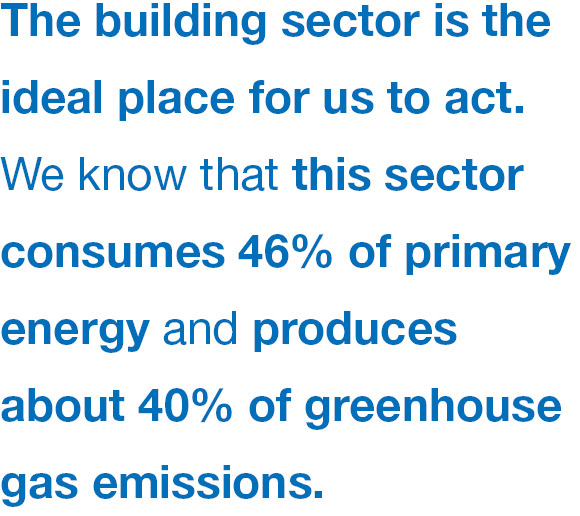Ralph Dinola, CEO, recently spoke at the EE Global Forum in Washington, D.C. The presentation was “Increasing EE Through Connected Systems: How Can Communities Take Into Account Holistic System Efficiency From Day One”, and this is his talk.
At NBI, we believe that unlike any time in the history of modern buildings, we have an unprecedented opportunity before us today to bring quantum advances to building efficiency in buildings. This convergence is the result of several disruptive innovations that can be brought together to dramatically transform the building sector in the next decade. This transformation is not only possible, it is essential to the future of our society.
 At the end of last year, the leaders of over 190 nations from around the globe committed to contain global warming to no more than 2 degrees Celsius. That unprecedented global commitment serves as a call to action for all of us to take measures where we have influence. The building sector is an ideal place for us to act. We know that this sector consumes 46% of primary energy and produces about 40% of greenhouse gas emissions. According to C40 and Arup, the building sector is key, where over 66% of the most impactful near-term actions on climate are in the building sector.
At the end of last year, the leaders of over 190 nations from around the globe committed to contain global warming to no more than 2 degrees Celsius. That unprecedented global commitment serves as a call to action for all of us to take measures where we have influence. The building sector is an ideal place for us to act. We know that this sector consumes 46% of primary energy and produces about 40% of greenhouse gas emissions. According to C40 and Arup, the building sector is key, where over 66% of the most impactful near-term actions on climate are in the building sector.
So what are these disruptive innovations?
- Whole Building Efficiency: We need to transform efficiency programs to whole-building approaches. Traditional measure by measure incentives are quickly running out of savings, while whole building incentive programs can deliver significantly more savings by deploying bundles of cost-effective measures, which can multiply the savings. These strategies can be customized by building type and climate zone for optimal savings. NBI teamed up with Ecology Action to specifically focus on a whole-building direct install program called SmartScale that provides a replicable model for tackling deep retrofit of small buildings, our most prevalent existing building type.
- System-level Efficiency: We need to transform system design, operation and regulation to system-level approaches and work to optimize those systems, rather than optimizing components. According to our research as part of ASE’s System Efficiency Initiative, these system-level approaches can deliver savings of 30-90%, depending on the system.
- Grid-friendly Buildings: Buildings and homes can be designed and operated to become “Grid-friendly” buildings, which can be a win-win for building owners, utilities and grid operators. Leveraging advanced energy management systems, grid-calibrated on-site renewable energy and energy storage, owners can optimize energy time of use and rates and realize energy savings and lower energy costs for better financial outcomes while minimizing disruptive ramping curves on the grid infrastructure.
- Zero Net Energy Buildings: The disruptive innovation that can bring these ideas together is Zero Net Energy Buildings – ultra-low energy buildings that produce as much energy as they consume on a net annual basis. NBI has been tracking ZNE buildings for the past five years and our findings are clear – ZNE buildings have been developed in 40 states, every climate zone and for a variety of building types and sizes, and ZNE-like objectives are being implemented in Europe and around the world. We have tracked more than 200 such buildings as either verified or emerging ZNE buildings. In many cases, these exemplary buildings are built for no more cost than the average construction cost for a given peer building.
- The Internet of Things: We believe that we have not yet begun to realize to potential of the Internet of Things in the building sector. Leveraging real-time building performance data, wireless technologies and data analytics, we can harmonize building systems and equipment to provide not only optimal efficiency, but optimal occupant comfort and well-being.
In closing, this is an unprecedented time for action and transformation of the building sector. The potential to bring together whole building and system-level efficiency approaches, grid-responsiveness and zero net energy building, optimized by rich data flows and interconnected wireless systems, we can realize the potential for dramatic energy savings and carbon reductions in the building sector.
Ralph DiNola, CEO
